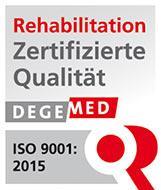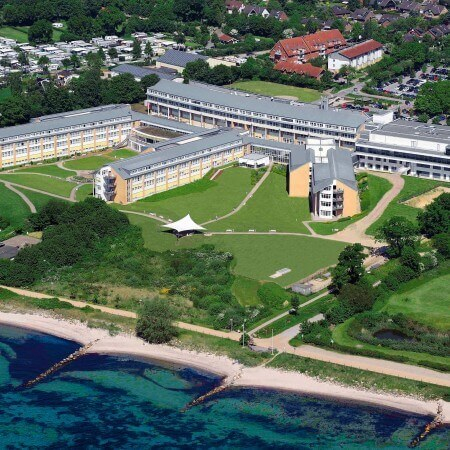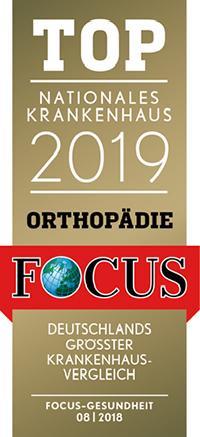Scoliosis is a lateral spinal curvature with rotation of the vertebrae around the longitudinal axis. Pathology is often accompanied by torsion (twisting) – a change in the shape and internal structure of the vertebrae. Scoliosis may cause the formation of not one, but two or three arcs of curvature. Scoliosis treatment in Germany is carried out using conservative and surgical techniques. Even in the most severe cases, German doctors get good results by restoring the spinal shape in one or more operations. The successful treatment of scoliosis is possible at any age, including in adult patients.
Content
- Types of scoliosis
- Conservative treatment
- Surgery
Scoliosis is a lateral curvature of the spine that often includes rotation of the vertebrae. It can develop in children, adolescents, or adults and may cause back pain, uneven shoulders, and posture issues.
Scoliosis is diagnosed through physical examination and imaging tests such as X-rays, MRI, or CT scans. The Cobb angle measured on X-rays helps determine the severity of the curve.
Treatment options in Germany include conservative methods like bracing and physical therapy for mild cases, and surgical interventions such as spinal fusion and minimally invasive procedures for severe cases.
Scoliosis surgery, such as spinal fusion, is generally safe and has a high success rate. German hospitals use advanced techniques and technology to ensure patient safety and effective outcomes.
Recovery after scoliosis surgery varies but generally includes a hospital stay of a few days, followed by several weeks to months of rehabilitation. Patients typically return to normal activities within 6-12 months.
Types of scoliosis
In most cases, the causes of the disease remain unclear. Therefore, patients are diagnosed with idiopathic scoliosis.
It can also be secondary: symptomatic, namely developed due to other pathologies: rickets, neurological disorders, hip joint lesions.
Depending on the direction in which the bulge of the arch is turned, scoliosis can be of the following types:
- levoscoliosis;
- dextroscoliosis.
Depending on the location of body parts, scoliosis can be:
- balanced – shoulder girdle over the pelvis, and the pelvis over the feet;
- off-balanced or decompensated – the proper relations between body parts are impaired.
The spine develops very rapidly over the period of up to 2 years. The next peak of growth occurs at the age of 10-13 years. Then the formation of the skeleton is completed. These growth phases are taken into account when choosing the terms and methods of scoliosis treatment. Children, adolescents, and adults undergo various surgical operations. Depending on the age at which scoliosis developed, it can be:
- infantile – up to 4 years;
- juvenile – developed up to 10 years;
- teenage – over 10 years old.
Scoliosis is rare in adults. As a rule, the lateral curvature of the spine in these patients is an uncured juvenile or teenage scoliosis.
According to the type of clinical course, scoliosis can be:
According to severity, depending on the angle of curvature, scoliosis can be:
- 1 grade – up to 10 degrees;
- 2 grade – up to 25 degrees;
- 3 grade – up to 50 degrees;
- 4 grade – over 50 degrees.
Conservative treatment
In Germany, treatment for scoliosis and other degenerative spine pathologies often involves a multidisciplinary approach, where specialists may recommend conservative methods like using brace and physical therapy to manage scoliosis symptoms before considering spine surgery, with chiropractors sometimes playing a role in the recovery process. Thus, conservative therapy is used in the early stages and also complements the surgical treatment of severe scoliosis. The treatment aims to:
- curb the progression of scoliosis;
- prevent respiratory and cardiac disorders, thereby creating favorable conditions for the follow-up surgical intervention;
- provide a better quality of life for those who are not eligible for surgery.
Patients receive symptomatic drug therapy, physiotherapy, massage, electromyostimulation (electrical muscle stimulation). Corsets and therapeutic exercises are often used.
Cheneau corsets are widely used around the world. This is an active corrective device that puts pressure on the convex parts of the spine. It corrects its shape in three planes, while not worsening the function of breathing and not causing muscle atrophy. The corset is made individually. In developed countries, a 3D scan of the torso is performed instead of the standard method of taking a plaster cast, and then a corset is made based on a virtual model of the torso.
The use of corset therapy reduces the risk of disability and reduces the number of patients who require surgical treatment. High-quality corsets have the following benefits:
- they do not limit the activity of the child;
- they can be used independently, without the help of adults;
they do not cause deformities of the jaw, or cervical spine.
Surgery
Indications for surgery are:
- ineffectiveness of therapeutic measures;
- initially gross deformations;
- rapid progression of pathology.
As a rule, surgery is a treatment method for scoliosis in the 3rd, and 4th grades, as well as for scoliosis of the lumbar spine. Arguments in favor of surgery include cardiovascular dysfunction, trunk imbalance, aesthetic defect, chronic pain, and rib hump.
Expansion thoracoplasty is often performed with the use of a vertical expandable prosthetic titanium rib (VEPTR). Such interventions must be performed no later than 6 months before the end of skeletal maturation. Surgery is not performed in late adolescence and beyond to avoid respiratory failure. Titanium prostheses need to be lengthened every 6 months. Repeated operations are less traumatic; and are performed through an incision of about 3 cm. At the age of 11-13 years, the rods are removed.
Some clinics use magnetically controlled growing rods (MCGR). To change their length, doctors do not have to perform additional operations. The rods are enlarged with magnets.
Dorsal-ventral fusion surgery is carried out to balance the vertebral bodies and stop the progression of the deformation of the spinal column. Doctors motionlessly connect the vertebrae. They can no longer move relative to each other.
Other scoliosis treatment options in Germany are:
- skeletal traction;
- pedicular shortening vertebrectomy (wedge-shaped vertebral excision);
- resection of the residual rib hump (performed for aesthetic purposes 2 years or more after spinal correction).
The choice of operation is determined individually, based on the characteristics of the spinal curvature and the age of the patient (before or after the maturation of the skeleton). Many people require multiple surgeries as part of their scoliosis surgery. Upon the completion of treatment, good results are usually achieved: the progression of the pathology stops, the balance of the trunk is restored, there is no pain, patients can lead an active life without restrictions, and go in for sports and physical labor.
You can undergo diagnostics, rehabilitation, and conservative and surgical treatment of scoliosis of the thoracic region or any other region of the spine in Germany. German orthopedic centers specialize in treating scoliosis and related conditions like kyphosis and lordosis, addressing symptoms such as abnormal posture and back pain by employing various techniques to correct spinal curves and improve patients' quality of life. You are welcome to use the Booking Health service to find out how much is the price of surgery in different clinics in Germany specializing in scoliosis treatment and book a medical care program at the best prices.
Authors:
The article was edited by medical experts, board-certified doctors Dr. Vadim Zhiliuk and Dr. Sergey Pashchenko. For the treatment of the conditions referred to in the article, you must consult a doctor; the information in the article is not intended for self-medication!
Sources:
SPINE-health
Medical News Today
NORD - National Organization for Rare Disorders










